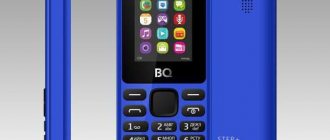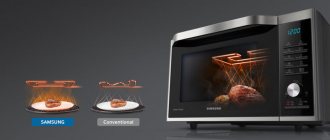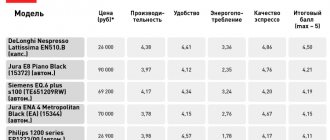Hello friends! In 2021, the LCD monitor market refocused on OEM production and maintains this trend in 2021. The main production facilities are concentrated in Southeast Asia - China, South Korea, Taiwan and some other countries).
p, blockquote 1,0,0,0,0 –>
Many manufacturers were able to move away from producing matrices, entrusting this to factories with a streamlined technological scheme, and switched to developing new technologies and promoting the brand on the market.
p, blockquote 2,0,0,0,0 –>
Today there are only three main manufacturers of monitors based on their own matrices: Samsung, NEC and LG. Today I propose to talk about them, as well as some other best companies, manufacturers of TN and IPS matrices.
p, blockquote 3,0,0,0,0 –>
Samsung
Currently, this Korean company is the largest manufacturer of matrices of any type and is not going to give up its leadership laurels so easily.
p, blockquote 4,0,0,0,0 –>
The corporation has more than a dozen of its own factories, including those with eighth-generation technological processes, which are located in South Korea and China.
It mainly produces wide-format displays with a diagonal of 21 to 24 inches, but the model range includes both very small ones and screens with sizes above average.
p, blockquote 5,0,1,0,0 –>
The products of this brand are consistently of good quality and quite reasonable in price. LCD matrices of this brand are used by many other companies, equipping monitors with their own electronic components: Viewsonic, IBM, Dell, Acer.
p, blockquote 6,0,0,0,0 –>
The most common types of LCD TV matrices
Depending on modern technologies, any of the matrices can be installed in the TV. There are three most common technologies that have different technological characteristics and are basic.
Today, making the right choice of LCD TV is very difficult, since there are a large number of different models. To make a competent choice, you first need to carefully familiarize yourself with the model you have chosen and its characteristics.
An important advantage of the IPS matrix is very deep and rich colors.
When choosing a TV, pay attention to its screen, namely the matrix. This important element is responsible for image quality. If you look at the screen directly, then it will be very difficult to determine what type of matrix is installed in this TV. But if you look at it from an angle, then the type of matrix becomes obvious.
There are three types:
- TN;
- VA;
- IPS.
TVs with TN matrix are the cheapest. This is the oldest technology, which can be easily identified by its very low viewing angle, low brightness and contrast. The VA technology matrix has a large viewing angle. This type is also distinguished by stunning colors and image clarity. The most used technology is the IPS type matrix. This type has the largest and most convenient viewing angle and many modifications. What makes this type the most common and in demand, many manufacturers use only IPS matrices and its varieties.
NEC LCD Technologies
A division of the Japanese corporation NEC, which develops and produces LCD panels, mainly for computers and laptops. Uses its own technologies. Only high-quality models with diagonals from 19 to 23 inches remain in the line, which are more expensive than their predecessor’s products.
p, blockquote 7,0,0,0,0 –>
It does not supply its products to other manufacturers and positions itself as a prestigious brand aimed at professionals in image and video processing.
p, blockquote 8,0,0,0,0 –>
This Korean brand recently merged with Phillips and became a Korean-European brand. When wondering who , rest assured that it is more likely to be “Asian” and most likely released in China.
p, blockquote 9,0,0,0,0 –>
In Europe, concerned about environmental issues, all harmful production has long been curtailed. The excellent technical parameters of LG matrices are the reason that they are used by other brands: Apple, BenQ, HP, Sony, ViewSonic.
p, blockquote 10,0,0,0,0 –>
Modern OLED or QLED technologies
Organic light-emitting diode (OLED) - organic light-emitting diodes. It was they who replaced the filters with gratings.
The technology involves placing three or four OLEDs in each individual pixel (image point).
Diodes emit light in the blue, red, white and green spectrum. Combinations of these colors can synthesize countless shades of all kinds of colors. Organic diodes are good because they can be turned off or dimmed - the characteristics of each light unit can be locally adjusted. The control is performed by a powerful graphics processor. Therefore, on OLED screens, the eye distinguishes thousands of shades of gray, absolute black. And this is the contrast and detail of the picture.
| OLED | QLED | ||
| pros | Minuses | pros | Minuses |
| Excellent image contrast | Price | More vivid picture | Lower contrast |
| Instant Sweep | Relatively short LED lifespan | Increased brightness | High price |
| Viewing angle almost 1800 | It’s comfortable to watch TV in a bright room | Backlight is used | |
| No image distortion | Large case sizes | ||
| Natural color reproduction without unnatural tonal saturation | |||
| Maximum realism of the reproduced picture | |||
| Does not require light filters or LCD matrix | |||
| Suitable for use in bright rooms | |||
QLED technology is considered a cross between LCD LED and OLED. It is called a marketing ploy by Samsung. They use Quantum-dot Light-Emitting Diode, or LED elements based on quantum dots. The latter are small semiconductor fragments. They are located in each pixel. "Quantum dots" generate their own light when a beam of light passes through them (classic LCD backlight). Due to the additional LED element (light source), these TV models have an increased body size.
Answering the question, which type of TV screen is better - OLED is better, since with excellent image quality its physical parameters are smaller and energy consumption is lower.
IDTech
Produces high-quality panels with high and ultra-high resolution. The products are aimed at professionals for whom picture quality comes first.
p, blockquote 14,0,0,0,0 –>
A company that produces cheap panels of a narrow range - exclusively 15, 17 and 19 inches. These products are not used when assembling monitors of famous brands.
p, blockquote 15,0,0,0,0 –>
These are the main manufacturers of PC monitors and matrices for them. If I forgot to mention someone, and you know about it, don’t be shy and remind me in the comments.
p, blockquote 16,0,0,1,0 –>
Ah, it seems the question was: who is better? I will answer with a professional opinion: Each brand can have up to 15 models in its line every 8 months, and therefore it would not be correct to say “this one is the best.” I recommend looking at it model by model.
If you are looking for where to buy a new device, let me just remind you that you will find any components and peripheral devices in this popular online store, and by the way, there are tons of screens there =) .
p, blockquote 18,0,0,0,0 –>
I also advise you to read about choosing the right monitor and its main characteristics. You can find out about the types of monitors for PCs here.
p, blockquote 19,0,0,0,0 –>
And that is all. I would be grateful if you share this post on social networks. Till tomorrow!
p, blockquote 20,0,0,0,0 –>
p, blockquote 21,0,0,0,0 –> p, blockquote 22,0,0,0,1 –>
The LCD monitor industry is currently dominated by OEM manufacturing. The main production capacities of LCD panels are concentrated in the countries of Southeast Asia (Taiwan, Korea, China). The presence of contract manufacturing has allowed many branded companies to move away from independently producing monitors, shifting this to the shoulders of third-party companies, and pay full attention to promoting their brand.
OEM manufacturer is a company that independently develops and produces components or finished products. OEM production (Original Equipment Manufacturer) also includes the production of LCD panels. The purchaser of the monitor) carries out final assembly, testing and pre-sale preparation.
Today there are only three companies that produce monitors based on their own LCD panels: Samsung, LG-Philips and NEC. Some manufacturers, such as Eizo, put their own control electronics on third-party LCD panels. Everyone else sells, by and large, only labels on the front panel of the monitor.
For the buyer, this means that choosing a monitor based on the name of the “manufacturer” is, to say the least, unreasonable. For example, the price of 18-inch monitors based on the same LCD panel, but with Sony and Belinea labels, differs by one and a half times. The situation is even worse in the field of wide-format monitors with a large diagonal: there the difference in the price of the same LCD panel can be twofold.
For the thrifty and meticulous reader, these are the tips.
- Find out which LCD panels currently have the best characteristics.
- Find out which monitors the panel you like is installed on.
- Buy a suitable price model from the line of monitors offered on the market.
Modern TV with IPS matrix: advantages
The leading place among other TVs is occupied by a model with an IPS matrix. This model has many advantages, which makes it the most popular. Such a liquid crystal matrix was developed back in 1996, but it became widespread only starting in 2010. This technology, from its inception to the present day, is still being improved and improved.
Today, we know many types of IPS type matrices. The most famous are: AH-, S-, E-, P-, H-IPS. All these types have become very actively used in the production of many modern televisions.
A TV with an IPS matrix has a high level of brightness and contrast
The main advantage of this LCD TV is color rendition. Unique IPS matrices today display more than 16 million stunning colors and shades. Thanks to such rich colors, image quality becomes more natural and as accurate as possible. In addition to this advantage, it is worth knowing many others that make this type so used.
Advantages of TVs with IPS matrix:
- The finest pixel grid;
- The image is the clearest;
- Has maximum depth of black and white;
- The viewing angle is great.
Thanks to the large number of varieties of IPS TVs, you can choose a model that suits you in terms of cost and quality. E-IPS TVs are quite affordable, and P, AH-IPS models are durable and of high quality. All these types have another advantage - energy saving.
The best TV manufacturers are rating leaders
If previously all TV manufacturers were doing equally well, now South Korean brands can boast of the greatest success. In particular, Samsung Electronics sells millions of its devices annually, the country of TV production is South Korea.
In the assortment of this company you can find a wide variety of TV devices - from the simplest to large and curved ones, equipped with Smart TV and a high refresh rate. In the case of Smart TV, it uses its own Tizen operating system, which can also be found in smart watches, Z-series smartphones and even refrigerators.
Minor brands
In stores selling LCD TVs, you can easily find devices under many other brands. Each of these companies has less than 3% of the market. However, this does not mean that they should not be mentioned at all. Some of them were once very popular. Suffice it to remember Panasonic - many of us used to have TVs under this brand. But the transition from picture tubes to LCD displays was difficult for the Japanese.
For a long time, the company produced screens in its homeland. This is what led to the high cost of such devices. Now Panasonic TVs are becoming increasingly difficult to find in large retail chains. In terms of their price tag, they are inferior to many competitors, and therefore buyers do not want to look towards Japanese products.
But it has a number of advantages. Firstly, engineers work in tandem with specialists from Hollywood, thanks to which the HDR picture turns out perfect. Secondly, premium models get a colorful and energy-efficient OLED screen with 4K resolution. Thirdly, the Japanese are not abandoning the production of televisions with a 3D screen - the image is displayed using shutter technology. Smart TV functionality is most often based on Firefox OS, an operating system that has never found a place in the smartphone market.
Sharp and Toshiba TVs
Surely many of our readers are familiar with the Japanese companies Sharp and Toshiba. At one time, they shared a fairly significant share of the global TV market and were considered one of the best manufacturers. It was easiest for them to achieve a low price tag, because these companies did not have to order LCD matrices from outside.
Not much has changed now. The Japanese still produce screens themselves. But mostly they supply them to other companies - they build them into their TVs, smartphones, tablets and other devices. It turns out that this brings more profit than assembling and selling your own television equipment.
However, the Japanese are not giving up on this matter - on store shelves you can still find very good devices with different dimensions, costs and functionality. Basically, these are all representatives of the budget segment - when the price tag does not exceed 40 thousand rubles. Interestingly, even such inexpensive devices can have a 4K screen. Two Japanese companies are not even thinking about OLED - this technology is too expensive for them.
Should we buy LCD or plasma?
The technologies used in the production of these types of displays are radically different, and therefore the quality of the reproduced image and the operating conditions of the equipment vary greatly.
A plasma panel is a pair of thin glass plates, the space between which is strewn with microcapsules containing gas.
They are inert (they use a mixture), but they always contain a phosphor. When an energized electric current passes through the cells, their fill changes its state to plasma, and the gas begins to glow a certain color (depending on the voltage characteristics). This is how an image is formed on the surface.
The liquid crystal type of TV screen appeared after plasma. The design is based on an LCD grille, color filters, and a light source.
A durable coating is applied for protection. When the LCD monitor is turned on, electrical impulses pass through the liquid crystal medium (twisted very small crystals). It, in turn, reacts to the applied voltage by changing its shape, which changes the light transmission parameters (the crystals straighten and change the angle). Crystals easily change their state:
- full “unwinding”—darkness;
- full “twisting” - brightness;
- medium degree of curl - gray scale.
Crystals do not create light or color, they only refract the rays emanating from the source. The picture is reproduced on the display after light passes through the LCD layer and then through the filter. Using the table below, it is easy to compare the TV screens of both generations.
| Plasma TV | LCD TV | ||
| pros | Minuses | pros | Minuses |
| Superb Contrast | Display size cannot be less than 32” | Any display size | Poor contrast due to low black level transmission |
| Natural color rendering | High price | Excellent brightness, can be viewed in strong light | Smaller viewing angle |
| Excellent black color rendering | Burnout of pixels (microcapsules) over time | Affordable prices even for large diagonal TVs | Long response time, which affects the quality of dynamic scenes |
| Wide viewing angle | High energy consumption | Low power consumption | Decreased monitor brightness after 5-7 years of use |
| Fast response time | Heavy, thick body | Thin, light, compact | |
Models of LCD TVs that can compete with plasma technology in terms of picture quality are made with LED backlighting.
This addition increases the price by 35-45%. Therefore, when deciding which type of screen is best for a TV, they often start from where the equipment will be placed. Plasma for a kitchen or small bedroom will be too large. It is better suited for a spacious living room, but if the room is located on the south side, then it will be more comfortable to look at a direct LCD monitor. Don't forget about energy consumption. But before drawing conclusions, it is wiser to compare the two types of LCD monitors.
Forgotten Legends
Unfortunately, not all companies were able to successfully survive the passing of the era of CRT televisions. Someone refocused on producing liquid crystal models, but at the same time lost most of their popularity. Others disappeared completely, unable to even sell their brand. For example, products under the Rubin brand are becoming less and less common on the shelves.
But these are one of the few televisions assembled in Russia. Devices called HORIZONT are sold in slightly larger quantities. As you might have guessed, these are the famous “Horizons” of the past, produced by a Belarusian enterprise. Interestingly, some devices have a 4K display, as well as a Smart TV function on Android.
Hitachi can also be considered a half-forgotten legend. This Japanese company now produces a wide variety of products - from screwdrivers to excavators. However, she is practically not interested in LCD TVs. In 2012, the company decided to leave this market, selling the rights to produce television equipment under its brand. The new owners are more successful - it’s not without reason that the range of Hitachi TVs is constantly expanding.
Finally, we can remember about JVC. Many Russians at one time had a VCR made by this company. And someone was lucky enough to use a video camera. Unfortunately, JVC did not survive the onset of the digital era - the company almost went bankrupt, and management had to sell it to Kenwood.
However, the brand has not disappeared - the new owner uses it to produce and sell televisions, while automotive electronics continue to be distributed under the Kenwood brand.
Which matrix is better IPS or VA: advantages of technology
What types of modern TVs are there? The most popular today are LKD TVs with three types of matrices. The most used are VA and IPS matrices. They are produced by most of the many well-known companies. The comparison of these technologies is obviously the most correct.
The choice of TV depends mainly on the needs and budget that the buyer is counting on. If you need a cheap TV, then a model with a TN matrix may be suitable. But if you still want to purchase a higher-quality model for yourself, then opt for models with VA and IPS.
VA technology TVs are suitable for viewing in low-light rooms
But which one is better to choose for yourself, you should decide after carefully studying their main advantages and disadvantages. IPS TVs are ideal for viewing any video format, with a viewing angle of almost 170 degrees. But VA matrix technologies have their own positive qualities, which are sufficient for the production of televisions.
Advantages of VA technology:
- Good viewing angle;
- Better image contrast;
- Saturation of colors.
The VA matrix is a compromise between the other two types: TN and IPS. Technologies do not stand still, so new MVA and PVA technologies are emerging. Models with such a matrix are not inferior in image quality to IPS TVs, and are also cheaper. These models are perfect for most families' daily viewing.
Summarizing
The LCD TV market is going through hard times. Sales are declining, and intense competition is forcing many companies to either close down or start producing something else. Now you know which TV manufacturers best meet the requirements of the times. But it is possible that the rating we published will become a little shorter in the coming years.
Tell us in the comments what TV receiver is used in your family, which TV manufacturers do you consider the best? And which brand would you focus on when buying a new device?











